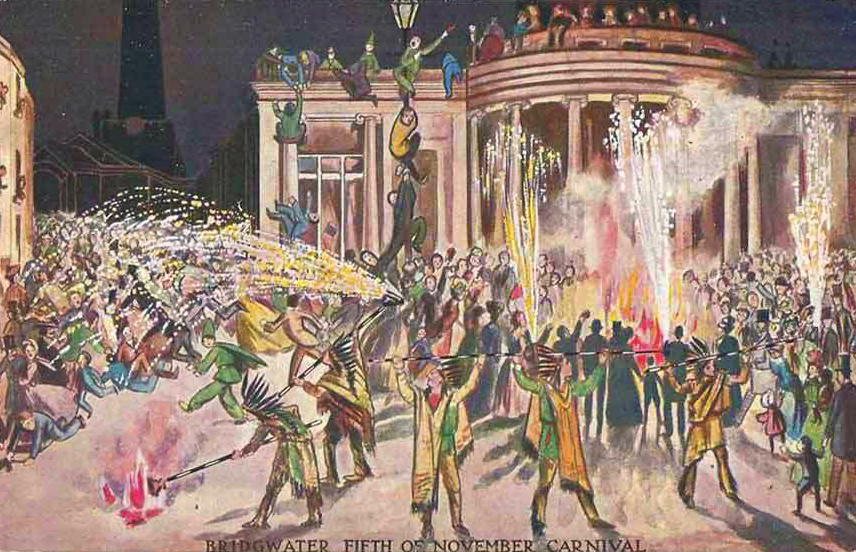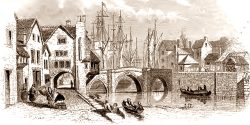
Bridgwater Carnival commemorates the defeat of a 1605 plot by radical Roman Catholic militants to blow up King James I (VI of Scotland) and his Parliament. In 1606 the Observance of 5th November Act 1605 was passed, formalising annual celebrations across the country to mark the king’s deliverance. Like almost every other town in the country, each year Bridgwater would hold celebrations, usually by the lighting of a huge bonfire on the Cornhill and revelry. Over the years additional elements would be added, including fireworks (including the famous Bridgwater Squib) and fancy-dress processions. When the Cornhill was tarmacked the bonfire had to be stopped. In the early years the Carnival had additional elements, such as burring barrels of tar and the burning of effigies of hate figures and usually the Pope. These traditions survive in other towns , Ottery St Mary for the former and Lewes for the latter, but over time Bridgwater emphasises the building of elaborate carts. Fortunately, now the sectarian elements of the celebrations have been rejected, and now the carnival is a thing for everyone, and a celebration of the town’s community.
Tableaux celebrations that now make up the carnival had an independent tradition in the town besides Guy Fawkes. Carts would be taken in procession in the town on celebrations days: the victory at Waterloo, for example, was celebrated by a cart featuring depictions of Britannia and the Duke of Wellington.
For the full history of Bridgwater Carnival, visit the Carnival Centre in High Street. The Official Carnival website can be found here.
Also see the Cattermole Manuscript for ephemera relating to the history of the carnival.
The video below records the 2022 Jubilee Cart:
Additional Notes

